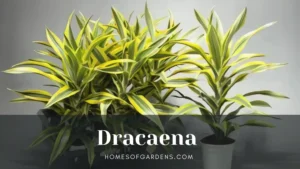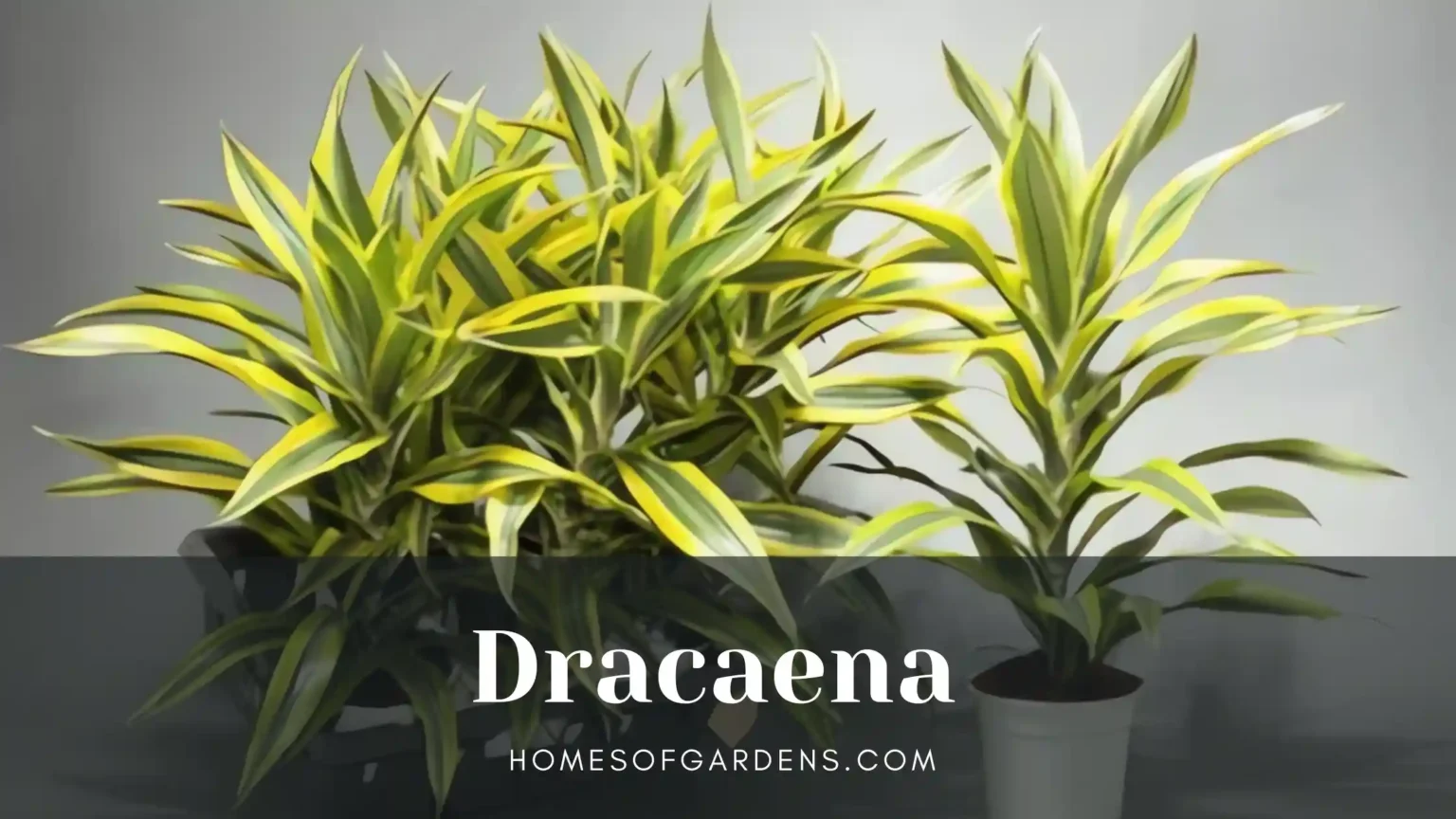There’s a subtle elegance to dracaena that makes their species apart from the other plants for the home. Their sculptural shapes and saber-like leaves that arc elegantly towards the light They add the perfect balance and elegance to any room. I can remember the very first dracaena I brought home, a “Marginata” with its vibrant red-edged leaves the way it transformed my apartment’s unattractive corner to a focal point over the course of a single night.
What makes dracaena really special isn’t their beautiful appearance and their amazing resilience, but also their extraordinary strength. These plants thrive in dorms, offices and in houses where other plants could fail, enduring sporadic maintenance while keeping their stunning appearance. If you’re attracted by the fascinating vibes of the corn plant or the dragon tree’s sculptural shape, knowing the plants is easier than you imagine.
The Quiet Charm of Dracaena
Dracaena have been seen in interiors for a long time and with good reason. There’s something meditative in watching the new leaves unfold from the middle of a ‘Janet’ or watching the white stripes of a ‘Warneckii’ catching the sun’s morning sunlight. In contrast to more demanding plants, dracaena are able to appreciate our hectic lives. They don’t have any grudges if you don’t remember one or two waterings and will continue to grow in a steady manner without worrying.
I’ve learned that the different varieties can be suited to different environments. The tiniest “Lemon Lime” adds an uplifting splash of hue to the tabletops, whereas the mature “Massangeana” (corn plant) can be a stunning floor plant, with its cane-like stems providing vertical appeal to any space. Let’s not forget their purifying properties for air. NASA’s Clean Air Study found dracaena especially effective in removing the toxins that are common to our homes which makes them as efficient as they are gorgeous.
Light: Reading Your Plant’s Signals
Dracaena speak for themselves through their leaves in relation to the light preference. When I first put my “Marginata” in direct sunlight its leaves sweltered in blisters within a matter of days. This was an evident sign that it favored a more gentle treatment. The plants thrive in indirect, bright light, but they can adapt to conditions with less light; however their growth could slow and variegation might fade.
It’s fascinating to observe how the different varieties react to light. The more dark green ‘Janet Craig’ is able to handle low light more effectively than its variegated cousins and the bright “Tricolor” requires more light to preserve its striking stripes. I’ve discovered it beneficial to rotate my dracaena each few weeks to ensure even growth and keep them from leaning excessively towards the lighting source.
Watering Wisdom: Less Is More
If there’s a thing I’ve learned from dracaena it’s that they tend to avoid a lack of attention to watering. Their semi-succulent characteristics mean that they keep water on their stems, and are able to handle dry spells. It is best to wait till the upper inch or so of the soil is dry prior to applying a good amount of water, and then let the excess water evaporate completely. This mimics the dry conditions they’d encounter in their natural habitats.
Overwatering is evident through the lower leaves turning yellow, and the leaves’ tips turning brown. I’ve discovered that using room temperature water and a few times wiping the leaves with a damp cloth helps keep my plants looking great. When it’s cold, I can extend the time between waterings considerably, often allowing up to three weeks between waterings.
Soil and Roots: Creating the Right Foundation
Dracaena don’t have a lot of issues with soil, however they do require adequate drainage. Use a basic potting mix with added perlite or sand to improve water flow while retaining some moisture. I only repot mine when I notice roots emerging out of the drainage holes, usually every 2 to 3 years. I always select an area that is just a bit bigger than the one before to avoid clogging.
When I first repotted a dracaena I was amazed by its root system. It had thick, orange-hued roots that appeared massive for the size of the plant. It taught me that even though the plants are slow to grow above ground, they’re creating a solid foundation beneath the soil.
Humidity and Temperature: Comfortable Consistency
While dracaena can adapt to normal humidity in the home, they do appreciate occasionally misting or placing in a tray of pebbles particularly during the dry winter months. I’ve noticed that my “Warneckii'” grows more crisp leaf tips in the winter when it is dry, so I’ve decided to group the plant with others to make a moister microclimate.
Temperature-wise, these tropical natives favor the same range of temperature that we are at ease, which is between 65 and 80 degrees (18-27degC). Cold breezes or temperatures below 55°F (13°C) often cause them to react strongly, leading to abrupt leaf drop. I discovered this hard lesson after a winter wind draft affected my “Massangeana’ plant to shed a few leaves over the course of a single night. This was an error I’ve never repeated since.
Nutrition: Gentle Feeding for Steady Growth
Dracaena aren’t a heavy feeder however they do require occasional nourishment during their growth season (spring through the summer). I use a balanced water-soluble fertilizer that is diluted to half strength each 6-8 weeks. I make sure to first water the soil to avoid root burn.
It is interesting to see how different varieties react to feeding. My specimens with variegated colors show appreciation by displaying brighter colors as the solid green varieties have noticeable larger leaves. In winter and fall I offer them complete freedom from fertilization and allow them to follow their natural growth patterns.
Pruning and Grooming: Shaping Beauty
One of the greatest pleasures of dracaena is that they can be transformed as they age. As my “Marginata’ became too large for the space it was in I simply cut down the main stem to the desired height. After a few weeks, new shoots began to emerge right below the cut. The ability of regenerating makes them adaptable to different environments and types.
I’ve also realized that it is important to remove older leaves that are yellowing, not just for aesthetics but also to stop potential insects from causing problems. A damp, clean cloth brushed gently over the leaves each week ensures they are free of dust and photosynthesizing in a timely manner.
When Challenges Arise
Even the most robust dracaena could have issues. Leaf tips that are brown usually indicate a sensitivity to fluoride (using filtering water can help) however, an abrupt drop in the leaves could signal the presence of temperature stress. Spider mites are sometimes seen particularly in dry weather. A complete shower or application of oil from neem typically will solve the issue.
The most important thing is to stay calm when issues arise. I’ve observed that dracaena responds well when you give it prompt, proper attention. Even if a plant loses most of its leaves, you can rejuvenate it with patience and by focusing on its essential needs.
Propagation of dracaena
There’s something magical about propagating dracaena. Stem cuttings placed in water develop roots surprisingly quickly, often within 2-4 weeks. I particularly enjoy air layering taller specimens—wrapping a moist sphagnum moss bundle around a notched stem until roots form before separating the new plant.
These new plants make wonderful gifts that carry the story of the parent plant. A cutting from my original ‘Marginata’ now grows in my sister’s home, a living connection between our spaces.
Designing with Dracaena
There’s something magical about the process of propagating Dracaenas. Cuttings of stems that are placed in water can develop roots quickly, usually within 2 to 4 weeks. I really enjoy air layering taller specimens by wrapping a sphagnum moss bundle that is moist around a notch on the stem until roots develop before separating the plant.
These plants make great gifts that tell the history of the plant that gave them their name. A portion of my first ‘Marginata’ is growing in my sister’s garden creating a permanent connection between our homes.
The Enduring Appeal of Dracaena
Dracaena are incredibly versatile in interior design. A group of ‘Song of India’ trees in different heights can create a dramatic impact, and one mature ‘Massangeana’ is able to make a room more stable. I’ve incorporated the slim “Colorama” to provide vertical interest to spaces that are narrow and Compacta, which is compact, does well in Terrariums.
Their architectural designs work well in minimalist modern spaces and bohemian-style, lush interiors. As time has passed I’ve learned the way their symbiotic growth makes a perfect contrast to free-form plants such as the philodendrons or pothos.
Final Thought
Dracaena demonstrates that the most beautiful house plants are the ones that are easy to maintain. As you progress you’ll gain knowledge of its requirements, and discover the reason why these plants remain popular for a long time. Their gentle existence reminds us that often the most important development happens slowly by one leaf at one time.

